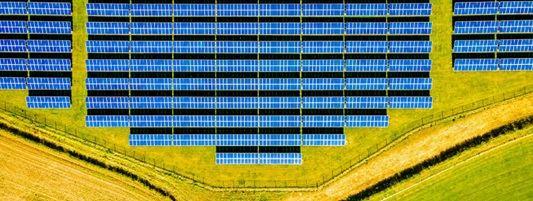Overview
Energy can be harnessed directly from the sun, even in cloudy weather. Solar energy is used worldwide and is increasingly popular for generating electricity, and heating or desalinating water. Solar power is generated in two main ways:
Solar photovoltaic (PV) uses electronic devices, also called solar cells, to convert sunlight directly into electricity. It is one of the fastest-growing renewable energy technologies and is playing an increasingly important role in the global energy transformation.
The total installed capacity of solar PV reached 1 865 GW globally by the end of 2024, representing a remarkable increase from 710 GW at the end of 2020. Over 451 GW of new solar PV capacity was added in 2024 alone, representing the largest addition of any renewable energy source and accounted for over three-quarters of all renewable capacity additions in 2024. Solar PV has accounted for the largest share of renewable power capacity in 2023, surpassing hydropower.
Solar PV is highly modular and ranges in size from small solar home kits and rooftop installations of 3-20 kW capacity, right up to systems with capacity in the hundreds of megawatts. It has democratised electricity production.
The cost of manufacturing solar panels has plummeted dramatically in the past decade, making them not only affordable, but also often the cheapest form of electricity. Solar PV LCOE almost halved between 2018 and 2023 alone, while over the 2010-2024 period, the global weighted-average levelised cost of electricity (LCOE) for utility-scale solar PV projects fell from $0.417/kWh in 2010 to just $0.043/kWh by 2024. By 2024, solar PV was 41% cheaper than fossil fuel alternatives.
Concentrated solar power (CSP) uses mirrors to concentrate solar rays. These rays heat fluid, which creates steam to drive a turbine and generate electricity. CSP is used to generate electricity in large-scale power plants. By 2024, the global installed capacity of CSP was approximately 6.9 GW, representing steady growth from the 4.6 GW installed capacity in 2014.
It is possible to classify CSP systems according to the mechanism by which the solar collectors concentrate solar irradiation: either “linear concentrating” or “point concentrating” varieties. Most existing systems use linear concentrating systems called parabolic trough collectors. Solar towers, sometimes also known as power towers, are the most widely deployed point concentrating CSP technology, but represented only around a fifth of all systems deployed at the end of 2020.
One of the main advantages of a CSP power plant over a solar PV power plant is that it can be equipped with molten salts in which heat can be stored, allowing electricity to be generated after the sun has set. As the market has matured, the cost of thermal energy storage has declined, making storage duration of 12 hours economic. This has resulted in an increase in the storage duration in CSP systems. CSP with low-cost thermal energy storage has the ability to integrate higher shares of variable solar and wind power, meaning that while often underappreciated, CSP could play an increasingly important role in the future.










